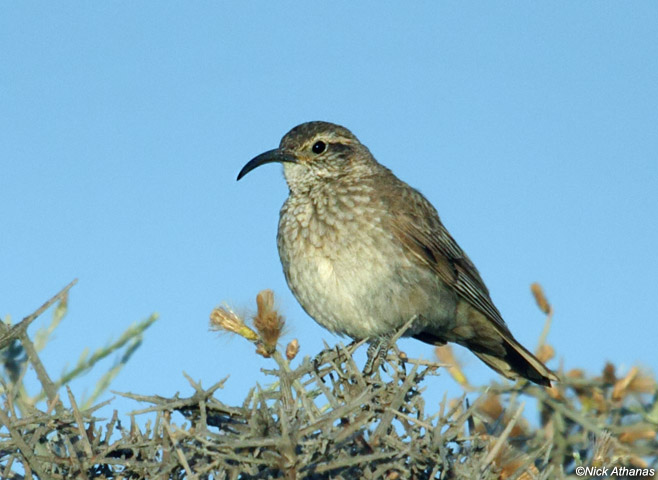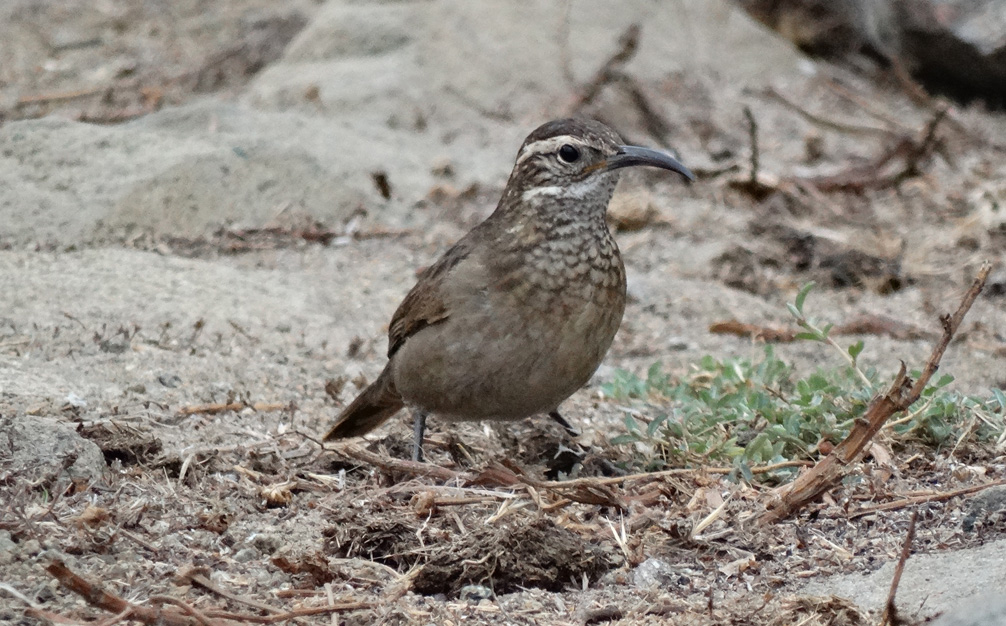
Upucerthia dumetaria
SUBFAMILY
Furnariinae
TAXONOMY
Upucerthia dumetaria Geoffroy Saint-Hilarie, 1832.
OTHER COMMON NAMES
French: Upucerthie des buissons; German: Schuppenkehl-Erdhacker;
Spanish: Bandurrita Comъn.
PHYSICAL CHARACTERISTICS
Body length is about 8.5 in (21.5 cm). Bill is long, strongly
downcurved, and pointed. The tail is long. The sexes are similar.
Overall coloration is dull gray-brown, with a whitish belly,
pale tips of the tail-feathers, a scaly white-on-brown pattern on
the throat, and a light stripe over the eye.
DISTRIBUTION
Occurs in the Andean region of western Bolivia, extreme
southern Peru, Chile, and southern and western Argentina
through southern Patagonia.
HABITAT
Occurs in montane and alpine slopes and plains, with cover
ranging from shrubby to more-open grasslands. Occurs as high
as about 12,800 ft (3,900 m).
BEHAVIOR
A non-migratory species. Usually occurs singly or in pairs. Defends
a breeding territory. Tends to skulk among cover on the
ground or in dense near-ground cover. Often cocks its long tail
erect. The song is a musical trilling.
FEEDING ECOLOGY AND DIET
Forages actively by running and hopping on the ground, seeking
its prey of insects and other small invertebrates.
REPRODUCTIVE BIOLOGY
Builds a nest in a tunnel dug into an earthen bank. Both the
male and female incubate the eggs and rear the nestlings.
CONSERVATION STATUS
Not threatened. A locally abundant species, particularly in
southern parts of its range.
SIGNIFICANCE TO HUMANS
None known.
Photo Gallery of - Scale-throated earthcreeper




 Animalia Life
Animalia Life